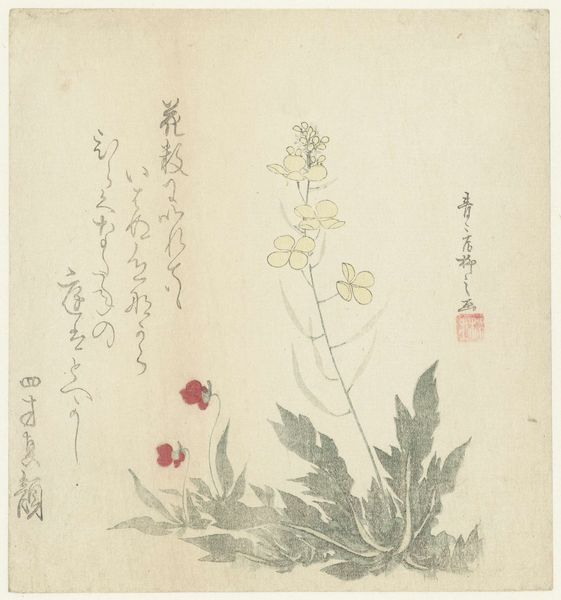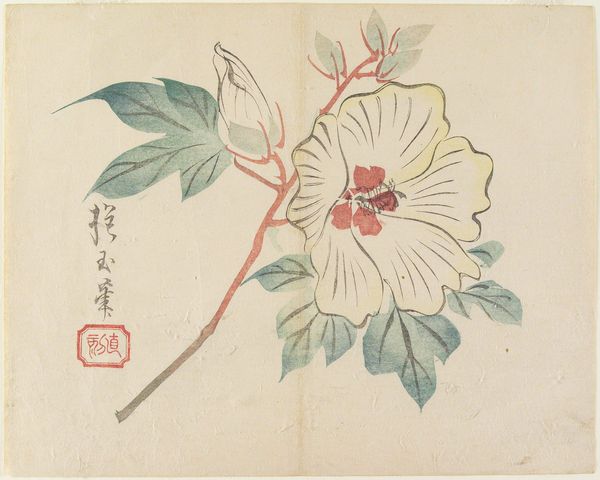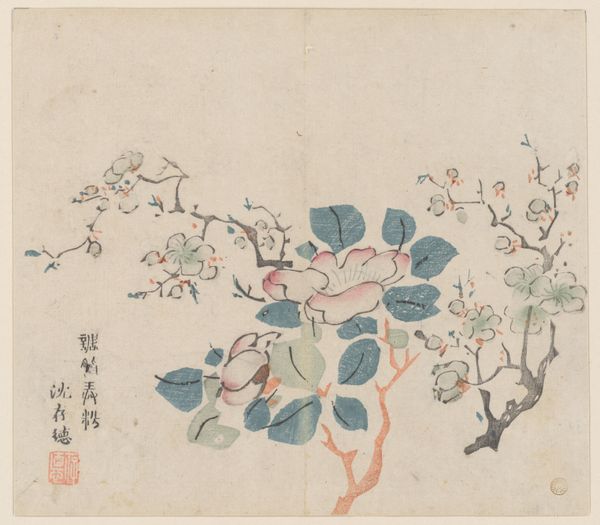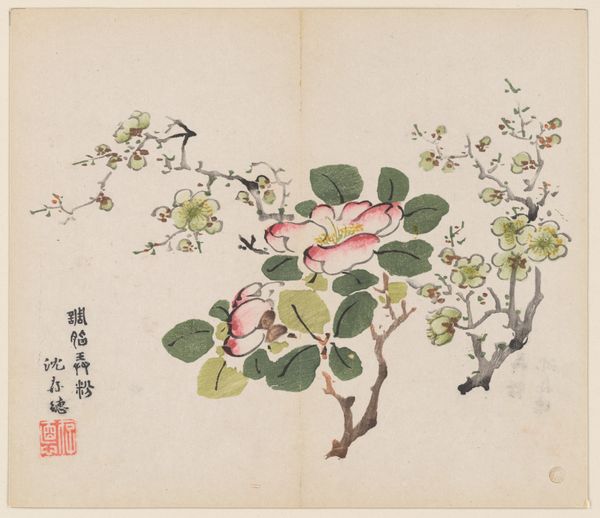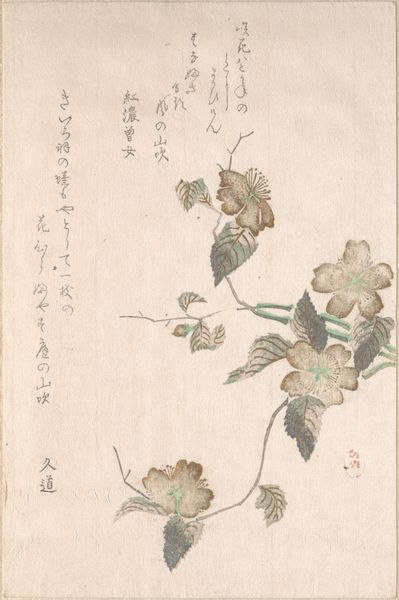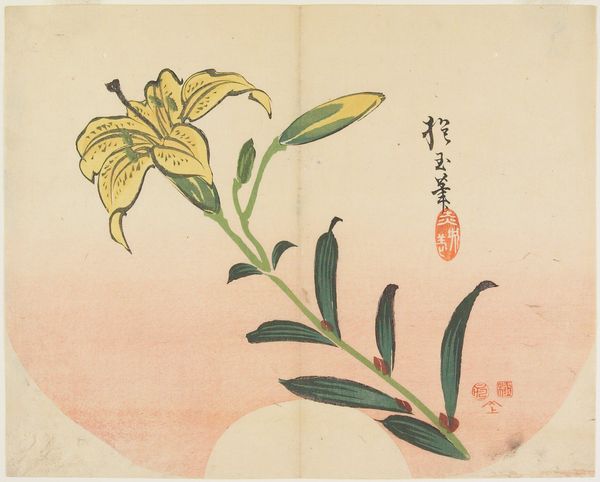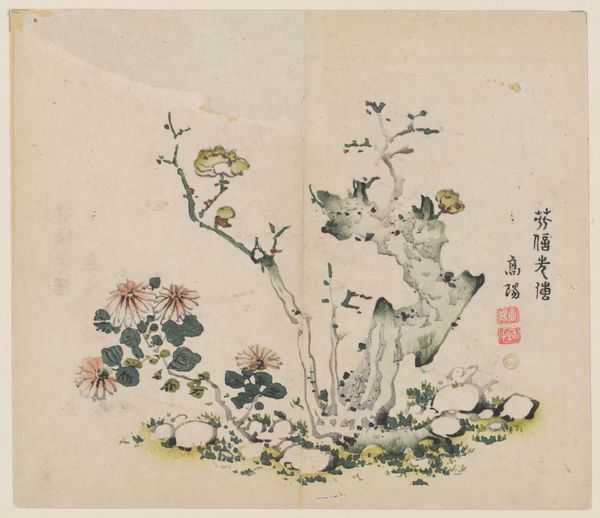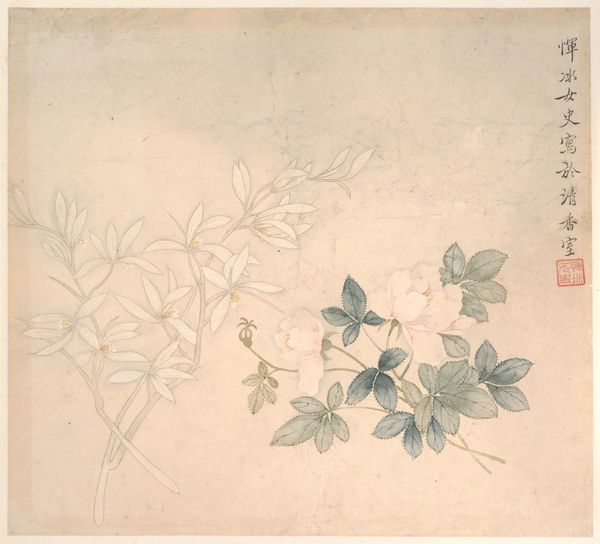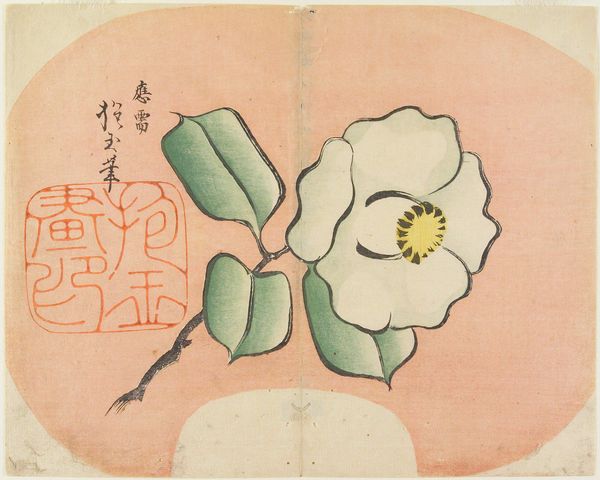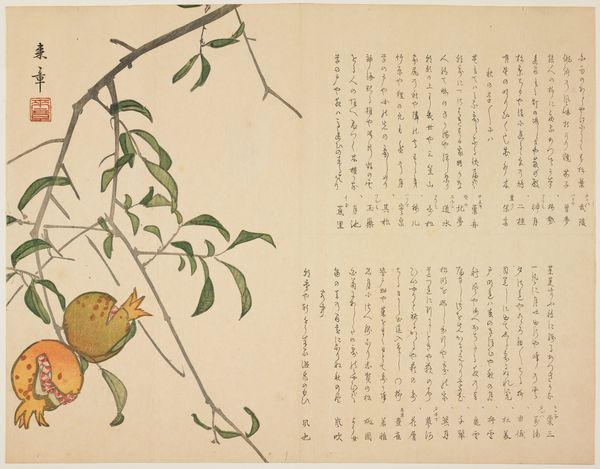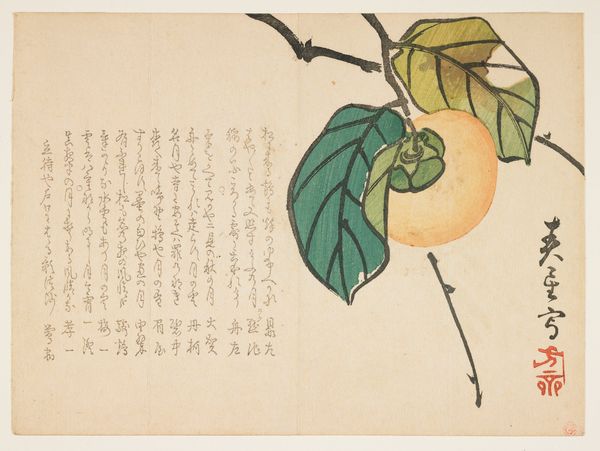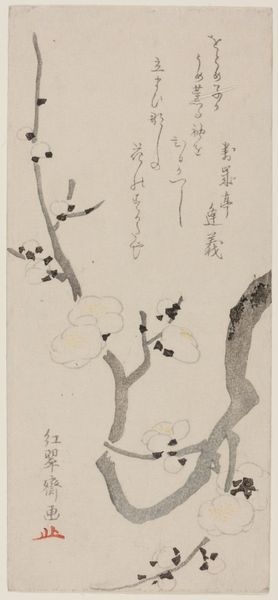
coloured-pencil, print, ink
#
coloured-pencil
# print
#
asian-art
#
ukiyo-e
#
japan
#
ink
#
coloured pencil
Dimensions: 9 3/16 × 11 9/16 in. (23.4 × 29.3 cm) (image, sheet, uchiwa-e)
Copyright: Public Domain
Editor: This is “Camellia Flower and Bud,” a print by Yamada Hōgyoku from around the 1830s. It looks like it's made with ink and colored pencil, very delicate. The color palette is so muted, almost melancholic. What visual elements stand out to you? Curator: The stark contrast between the dark leaves and the luminous flower immediately arrests the eye. Observe how the artist uses line to define form, achieving an elegance within the flat plane. The asymmetrical arrangement—a hallmark of ukiyo-e—creates a dynamic tension. Do you perceive a certain symbolism at play? Editor: Symbolism? I mainly see a well-observed botanical study, but I guess the contrast could also suggest a deeper meaning... Curator: Indeed. The camellia, especially a white one like this, often signifies fragility and fleeting beauty within the Japanese aesthetic tradition. Notice the almost perfect circular form of the blossom juxtaposed against the sharp angles of the branch and leaves. This creates a compelling dialogue between perfection and imperfection, growth and decay. How does this contrast impact your perception? Editor: I hadn't thought of that, but it does give a sense of transience. The bright white of the flower makes me feel like I'm seeing it at its peak. Are there similar examples in Western art that use such potent botanical symbolism? Curator: While Western art engages with floral symbolism, the directness and structural purity of this piece are unique to the ukiyo-e tradition. Consider, too, the economical use of line, achieving maximum effect with minimal means. This principle, deeply embedded in Japanese aesthetics, encourages contemplative viewing. Editor: It’s amazing how much can be conveyed with so few elements, when considered from the formal qualities. Curator: Precisely. And by focusing on the compositional structure, we gain a richer understanding of its aesthetic and cultural underpinnings.
Comments
No comments
Be the first to comment and join the conversation on the ultimate creative platform.
